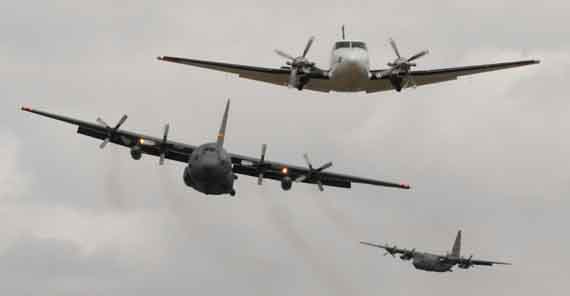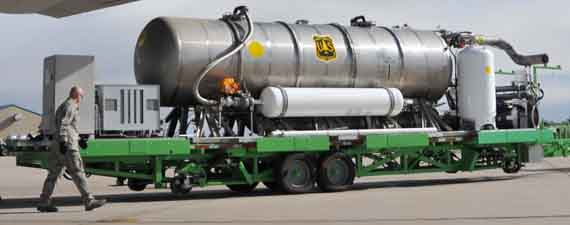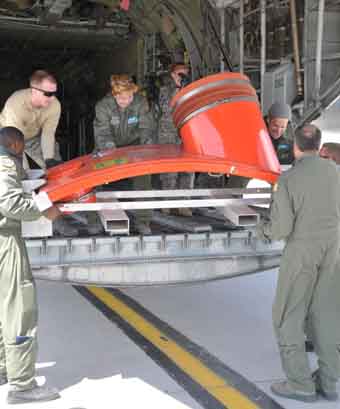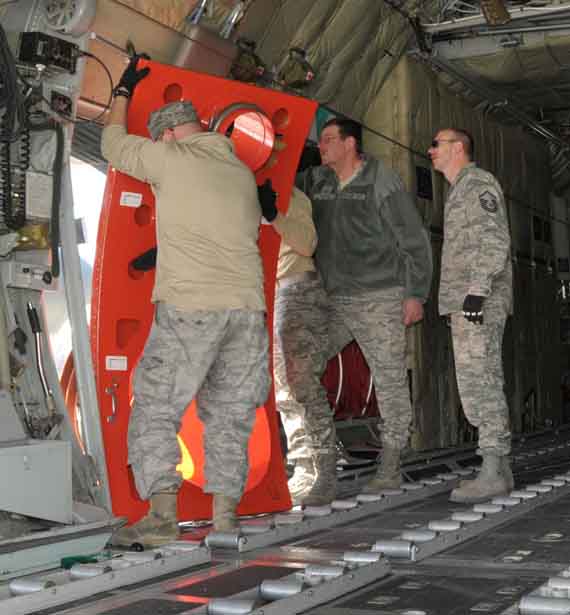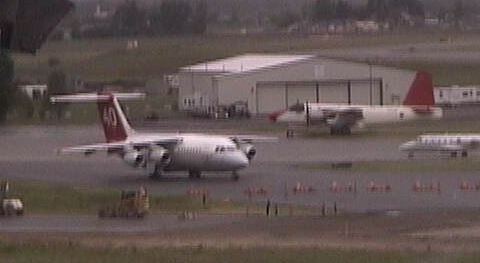
Next Generation air tankers
The U.S. Forest Service, after saying earlier that they would make the announcement “by the end of April”, still has not made public any decisions about contracts for the next generation of air tankers. The contract solicitation closed February 15, 2012. These next-gen aircraft are supposed to carry (preferably) 3,000 to 5,000 gallons of retardant, shall be able to cruise at 300 knots, and will have turbine or jet engines. We have heard rumors about why the contracts have not been awarded, which we are attempting to confirm.
The inability of the U.S. Forest Service to make a decision about additional contracts is putting a serious dampener on many air tanker operators and their hopes of putting more aircraft in the air. These contractors can’t go to the bank and borrow millions of dollars to buy an aircraft by saying, “We think the USFS may give us a contract this year, or next year, or maybe the year after that; but really we have no friggin’ idea what the USFS is going to do. And if we do buy one, we don’t know if the Interagency Air Tanker Board will approve it. If we do get a contract, and if the aircraft is approved by the IATB, we don’t know exactly how many flying hours we will get paid for each year.” For some reason, bankers have little empathy for such an approach.
And some people wonder why the number of air tankers on contract has seen a 75% reduction over the last 10 years — from 44 in 2002 to the 10 or 11 (10.5 ?) we have today.
Air tanker list
On Friday there were 10 large air tankers on contract and active:
- 3 in Nevada
- 2 in New Mexico
- 1 in Arizona
- 2 in Colorado
- 2 in California
The last time we obtained the list of large air tankers that were on exclusive use contracts was April 19, 2012. Now as you can see below, there is an updated list, dated today, May 25. There are two notable changes: Tanker 40 (with “interim approval”) is added, and Tanker 10 dropped off.
It was Tanker 10 that had the 24-inch crack in a wing spar and skin, causing the FAA to issue an Emergency Airworthiness Directive in February. Dan Snyder, President of Neptune told Wildfire Today on Friday that they have decided to not repair the aircraft this year, but to put it in “ready” storage.
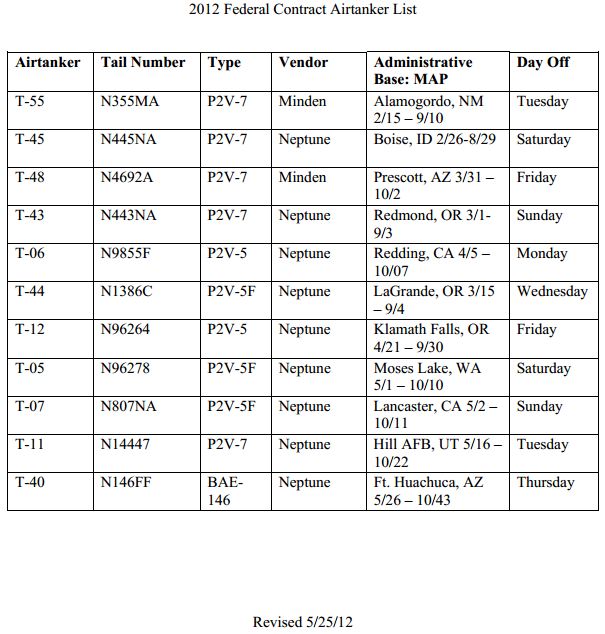
Tanker 40
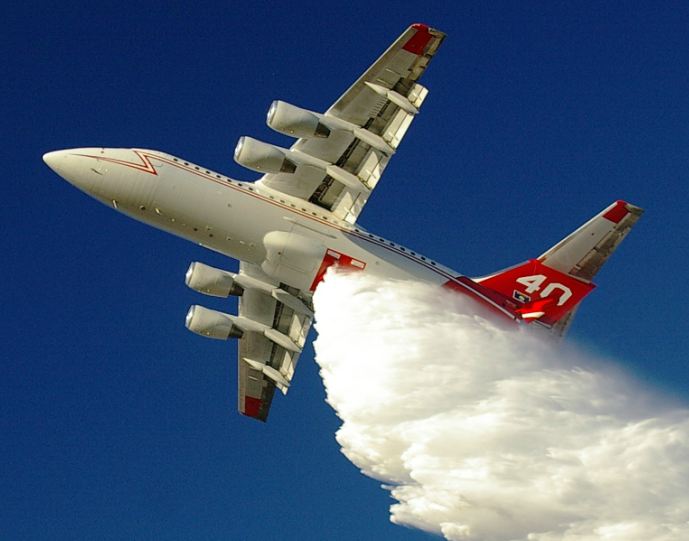
Neptune’s jet-powered air tanker, a BAe-146, will go on contract tomorrow, May 26 and will work through October 5. Tanker 40 is being brought on as “additional equipment” on their existing contract. As of Friday night, there was no Resource Order for the air tanker and it was sitting at Missoula. (UPDATE 11:20 a.m. MT, May 26: A flight plan for the aircraft was filed for it to depart Missoula at 11:00 a.m on May 26. en route to Alamagordo, New Mexico, for an estimated arrival at 1:55 p.m. MT. This would put it fairly close to the Whitewater-Baldy fire. It actually took off at 11:20 a.m. UPDATE again: before it arrived at Alamagordo, it was diverted to Albuquerque, New Mexico.)
Tanker 40 is still working under “interim” approval from the Interagency Air Tanker Board. At the end of this year it will be reevaluated and considered for full approval, based on how it performed while dropping retardant, and how it interfaced with ground crews at air tanker bases. During the winter some changes were made to the aircraft to improve its performance.
In a news release dated April 21, 2012, Neptune stated that by the beginning of the 2012 fire season they expected to take delivery of two more BAe-146 air tankers, and by 2021 they will acquire nine more, for a total of 11. These would replace the nine 50+ year old military surplus P2V air tankers they are currently operating.
Neptune has recently revamped their web site, and on it we found this statement today, indicating that they revised their air tanker acquisition schedule, most likely due to the U.S. Forest Service’s dithering about the next gen contracts.
By the end of summer 2012, we will have 3 BAe-146 large airtankers. By 2016, there will be 11 modern, large airtankers. This fleet will have the capability of being dispatched to customers worldwide.
“Worldwide”. Hmmm. Which makes me think, would I want to fly a P2V to Greece? Or Australia? Thanks, but, NO! I would be surprised if anyone would, especially after several of them have been forced to make emergency landings in the last few months at Missoula and Prescott with dead engines, or landing gear that had to be manually lowered, giving airport firefighters something to do by escorting the air tankers down the runways as they landed. So these new air tankers may give Neptune Aviation a capability they previously didn’t have. Who knows… maybe some of them will end up down under during the northern hemisphere’s winter.
Minden also has two P2Vs, and is converting a BAe-146 into an air tanker — a project that has been going on for well over a year.






